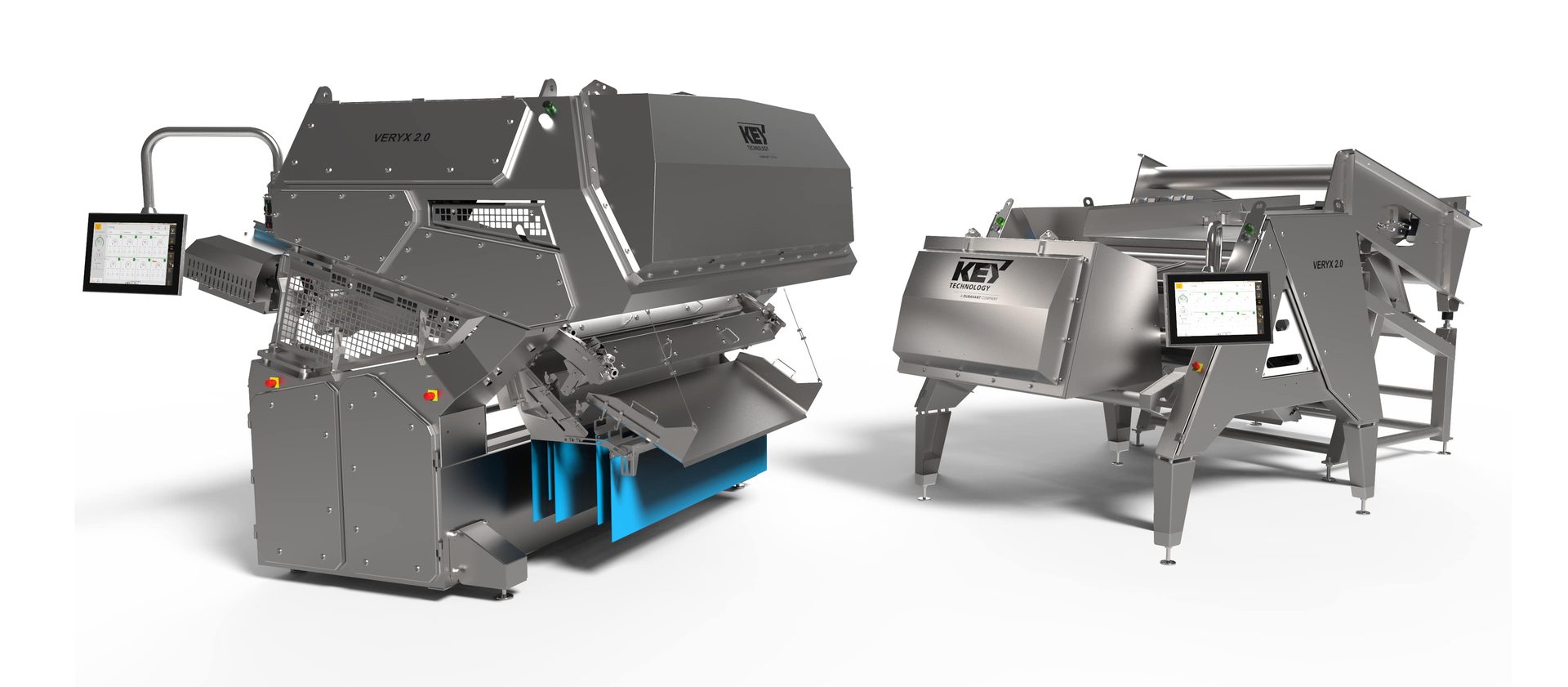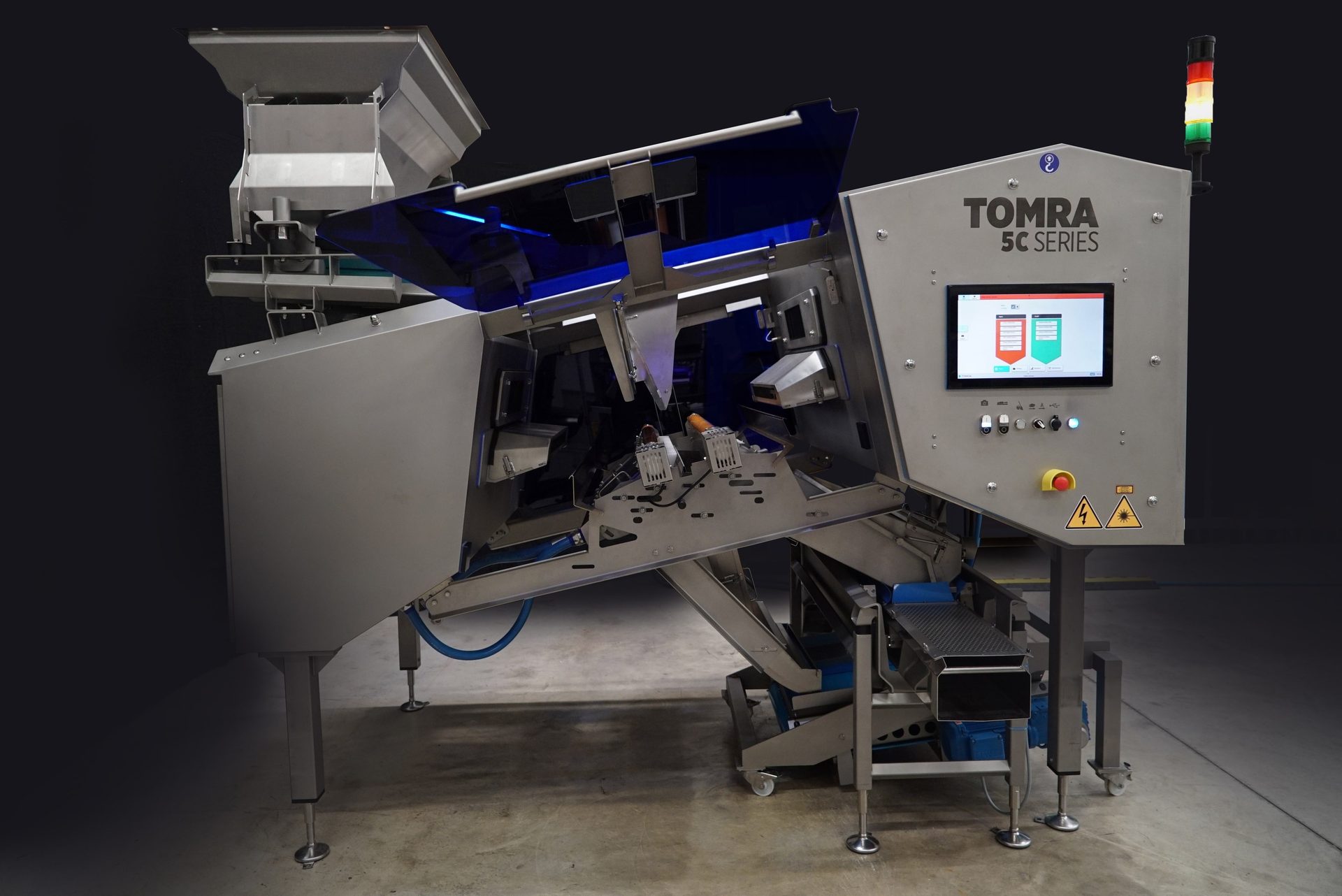“Twenty years ago, if you were selling almonds, a ‘low foreign material’ ratio would be 20 pieces per ton. Now, you’d get laughed out of the building,” he says. “They’re asking for ways to get that foreign material count down to two pieces per ton, or one piece per two tons. They’re focused on the data and want information on what those machines are seeing to help validate the quality of the product they’re buying.”
Snack and bakery customers also want to do ingredient handling jobs with as few runs as possible, which means keeping false rejects to a minimum, O’Donnell says. “Most processors will tell you they spend 80% of their time running 20% of their product—going over and over it, cleaning to get down to a good product,” he says. “One of the things we’ve done is taught the machines how to target the center of an object, rather than a defect.”
For example, if a piece of shell is sticking out of an almond, previous generations of machines would air to attempt to blast it out, O’Donnell says. “But that might miss it, or hit another shell. Our new machines have more precise and accurate ejection,” he says.
To meet demand, equipment manufacturers have been running full tilt for a couple of years, says Chuck Kerwin, general manager and sales manager at AZO Inc., Memphis, TN. It’s increasingly difficult to take on new business. “There’s a pressing need, and that need may not be fulfilled for a while…”
In the past, it was significantly easier to place an order and receive it quickly, Kerwin says. Food industry customers face a two-part dilemma because the difficulties finding adequate manpower make it challenging to adequately maintain existing machines, as well. “We’ve see an increase in spare parts orders, so some maintenance is being done,” he says. “But without basic fine-tuning—a materials handling system is designed in such a way that it could be underperforming, and you don’t realize that.”
For example, Kerwin says, if a mixer is supposed to weigh and convey 2,000 pounds of flour in 1½ minutes, and the system isn’t maintained properly, that might take 2 or 2½ minutes instead. “It’s still working, but there’s an efficiency issue,” he says. “If the other weighments are taking longer than they should, you begin to materially impact the throughput and, ultimately, the capacity of the production line. It’s kind of a slow death by 1,000 cuts.”
Some might say that if a machine is working, “We shouldn’t mess with it,” Kerwin adds. “The question is, ‘Is it working well?’” SF&WB




